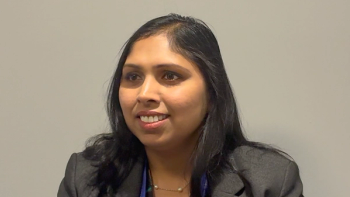
Anticonvulsants Fail to Improve Survival in Newly Diagnosed Glioblastoma
A pooled analysis revealed that the anticonvulsants valproic acid and levetiracetam do not improve progression-free or overall survival in patients with newly diagnosed glioblastoma.
A pooled analysis revealed that the anticonvulsants valproic acid (VPA) and levetiracetam do not improve progression-free or overall survival in patients with newly diagnosed glioblastoma.
Epileptic seizures are a common and often presenting symptom in brain tumor patients. Some previous studies have suggested a survival benefit in glioblastoma when VPA is used as an antiepileptic drug along with standard cancer care. “Given the low number of novel, promising pharmacological agents for the treatment of gliomas, there is growing interest in exploring the possible inclusion of VPA into the standard of care for pediatric brain tumors and newly diagnosed adult glioblastoma,” wrote study authors led by Michael Weller, MD, of University Hospital Zurich in Switzerland.
The authors conducted a pooled analysis including a total of 1,869 patients with newly diagnosed glioblastoma who were treated with temozolomide; a subset of this group (EORTC-NCIC) was used as hypothesis-generating, and then most of the trials were pooled as a validation cohort. The results were published online ahead of print in the Journal of Clinical Oncology.
Patients who received VPA in the EORTC-NCIC cohort had a hazard ratio (HR) for overall survival of 0.89 (95% CI, 0.65–1.22; P = .469) compared with those who did not receive VPA. The validation cohort also found no difference, with an HR of 0.96 (95% CI, 0.80–1.15; P = .633).
Progression-free survival was also no different, with a HR in the first cohort of 0.91 (95% CI, 0.67–1.24; P = .560) with VPA compared to no VPA, and 0.91 in the validation cohort (95% CI, 0.77–1.07; P = .241).
The same analysis was undertaken with levetiracetam, though only in the validation data set because only one patient received the drug in the hypothesis-generating cohort. Again, no significant differences were seen with regard to overall survival (HR, 1.05 [95% CI, 0.92–1.20]; P = .462); with regard to progression-free survival a slight harm was observed with levetiracetam (HR, 1.14 [95% CI, 1.01–1.28]; P = .029).
The analysis confirmed earlier work that showed the major prognostic factors for survival in glioblastoma include age, WHO performance status, extent of resection, and MGMT promoter methylation status.
The authors noted the limitation that only antiepileptic therapy at study entry was considered, and changes between medications or dosages could not be included in the analysis. Only a prospective randomized trial could collect such data, and “neither additional single-arm trials, even if these yield encouraging outcomes, nor underpowered phase II trials will provide this definitive answer,” they wrote. Assuming the potential benefit of VPA is similar to what has been observed before, however, a phase III trial would require upwards of 5,000 patients to show the effect.
Newsletter
Stay up to date on recent advances in the multidisciplinary approach to cancer.


![According to John Henson, MD, “What we need are better treatments to control the [brain] tumor once it’s detected.”](https://cdn.sanity.io/images/0vv8moc6/cancernetwork/e0d29c38bb732429ae370e4ef7d1829a10c96446-2992x1684.png?w=350&fit=crop&auto=format)















































































